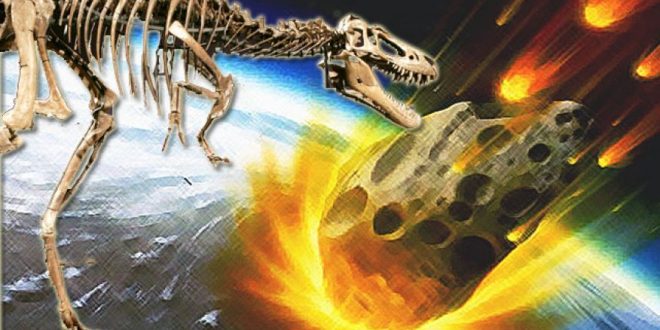A research of the massive crater that formed when an asteroid crashed into Earth 66 million years ago, wiping out all nonavian dinosaurs and most life on the planet, is giving insights into how impacts can help shape planets and possibly even provide habitat for the origins of life.
The research, led by Joanna Morgan of Imperial College London and Sean Gulick of the University of Texas at Austin, used rock samples from the Chicxulub crater to unlock the secrets of how asteroid and comet shape the planets they collide with.
The Chicxulub crater is the only one on Earth with a known peak ring, which is a circular formation of elevated material within the larger crater but offset from the center. These peak rings are familiar sights on rocky planetary bodies, including the moon, although on Earth they disappear relatively quickly through erosion and geological forces.
Core samples from Chicxulub’s peak ring, drilled from shallow ocean waters in the Gulf of Mexico, offer Earth-bound scientists a close look at where the material that formed these peaks came from.
There are differing theories about how peak rings form. In one model, the impactor drives deep into the planet, causing an upwelling of molten and solid rock, like the backsplash of a raindrop falling on water. This rises miles up overhead before collapsing and ultimately settling into an elevated ring of material that encircles the impact site. A less dramatic model shows the peak ring rising up like a splash around the center of the crater.
The scientists’ results show that the former is more likely, based on the composition of rocks sampled from the Chicxulub peak ring. This means that dinosaurs nearby would have been in for one hell of a volcanic show, at least until the blast of heat from the explosion got them.
If the Chicxulub asteroid carved a hole 18 miles deep, it could have seen a column of molten rock rise nine miles above Earth’s surface before collapsing under its weight. The air would have filled with fireballs, starting forest fires for thousands of miles around. Earthquakes, volcanoes, and tsunamis would have ensued, and when the planet fell quiet, the air would have been thick with enough ash and soot to blot out the sun.
It was, by any standard, a dark day for the planet, and up to 90 percent of all Earth’s species would ultimately go extinct in the aftermath. But, if you take the long view, it was also a moment of rebirth, when the stage was set for new species, and ultimately humans, to inherit the Earth.
“It is hard to believe that the same forces that destroyed the dinosaurs may have also played a part much earlier on in Earth’s history by providing the first refuges for early life on the planet,” said lead author Joanna Morgan, a professor at Imperial College London and the expedition’s co-principal investigator. “We are hoping that further analyses of the core samples will provide more insights into how life can exist in these subterranean environments.”
Agencies/Canadajournal
 Canada Journal – News of the World Articles and videos to bring you the biggest Canadian news stories from across the country every day
Canada Journal – News of the World Articles and videos to bring you the biggest Canadian news stories from across the country every day



